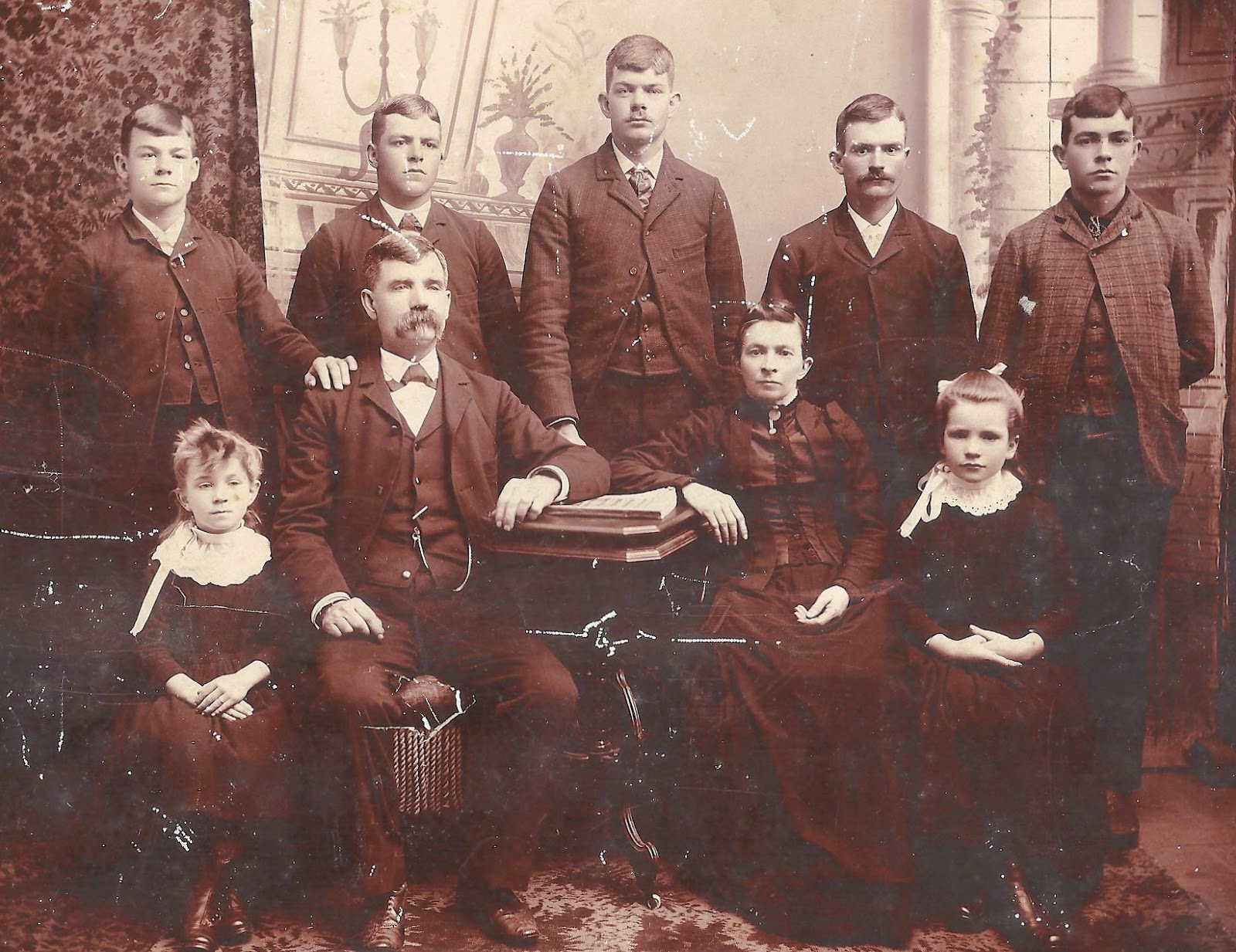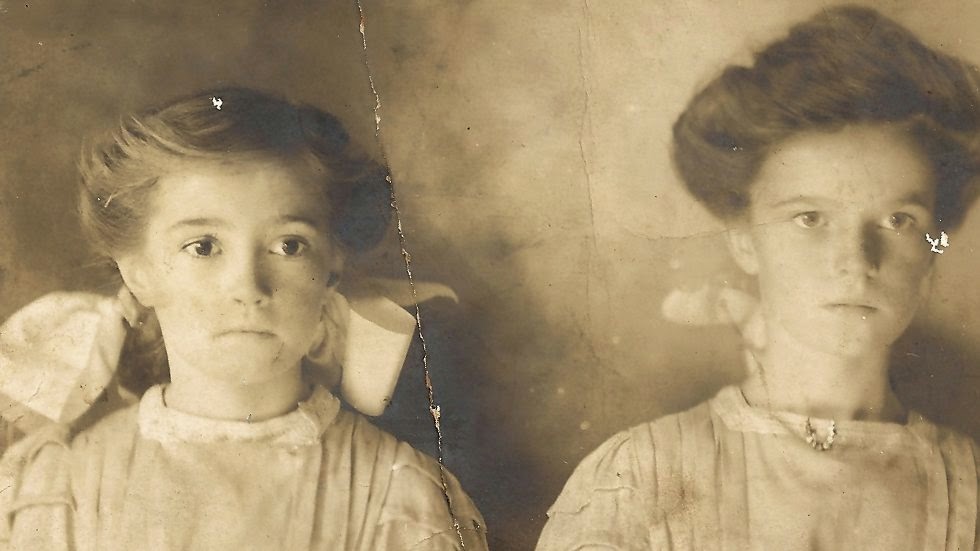In 1959 Ray decided that we five needed to see more of the world and get up close and personal with nature. To him this was best achieved by camping. It's a long story and it has been written about. But let me write just a tad more about it.
For me, and for most of us, the favorite part of the trip was the time we spent in Bandelier. It was peaceful, it wasn't hot and, may I say it again, it was peaceful. One afternoon Dad took Steve, Sally and me on a short hike to climb up to Ceremonial Cave. The following is the article Ray wrote for the Kansas City Star that was published on March 23, 1962 - almost 3 years after the event.
Ojoaque, NM – There was a thundershower falling down through Los Frijoles canyon and two large black ravens flapped noisily along as my three older children and I sat in the Indian ceremonial cave several hundred feet above the canyon floor.
It was an afternoon that both they and I will remember as the brief rain shower among the ruins occupied by the Indians more than 700 years ago here in Bandelier National Monument, a living remnant of a civilization long gone.
The sun had been shining when the four of us started out along the trail lined with pine trees and running along the bed of the tumbling Los Frijoles Creek. We were on our way to visit the Ceremonial cave still preserved as it was when the Indian priests used it centuries ago.
By the time Steve, Susan and Sally and I were two-thirds of the way to our destination, clouds had begun to roll in over the canyon edge and the rumble of distant thunder could be heard.
We reached the point in the trail where the ascent up the cliff face to the old ceremonial cave, in use in the 1200s, begins.
High above us in the canyon wall, consisting largely of tuff, a form of consolidated volcanic ash, was the half-moon entrance to the cave. For a time the trail led up over the basaltic lava boulders ejected thousands of years ago from the great volcanic crater – perhaps the largest in the world – whose rim today forms the Jimez Mountains.
From there on a series of large timber ladders, whose rails are as large as telephone poles, have been installed by the National Park Service. We started up the ladders with Steve first, followed by the two girls and myself.
We inched our way up the ladders until we reached the cave entrance. Then we stepped inside onto the dusty floor. The ceiling and walls were blackened with the smoke of numerous ceremonial fires. Indian petroglyphs were etched into the walls.
In the floor of the cave, there was a large circular hole marking the entrance to the kiva, the chamber used as a ceremonial council room by the elders of the community. The views across the canyon with its tall pines and the plateau stretching on beyond was magnificent.
No sooner had we become situated than the rain began to fall. There was talk about being trapped up here for days. Thoughtfully, we sat in the cave entrance and munched on chocolate bars.
Bandelier is a place where time stands still. An area on the upper Rio Grande river valley of New Mexico 46 miles west of Santa Fe, it consists of the Frijoles and Otowi sections and is mostly a wilderness crossed only by trails.
Cliff ruins of talus villages extend along the base of the northern wall of the canyon approximately two miles. These houses of masonry were irregularly terraced, from 1 to 3 stories in height, and had cave rooms gouged out of the solid cliff.
In front of the caves is the ruined pueblo of Tyuonyi on the floor of the Frijoles canyon. It is a large structure of nearly circular plan with three kivas in an enclosed plaza. The structure contained more than 400 rooms and rose to 4-story height.
The large community house was excavated in 1908, 1909 and 1910 by the Museum of New Mexico and the School of American Research. Mary, I and the children had delighted in walking among its ruins.
Tree ring chronology and correlations of pottery types indicate that most of Bandelier’s ruins belong to the late pre-conquest period, although a few small ruins date back to the 12th century. The large pueblos of Tyuonyi, Tsankawi and Otowi evidently were occupied until about 1550 AD although their decline had probably set in by the time Coronado visited the region in 1540.
With the passing years, drought, soil-eroding, flash floods, soil depletion, raiding Indians, famine, disease—any of these things singly or in combination might have caused the beautiful area, a veritable oasis in the dry country of New Mexico, to be abandoned.
As we sat in cave, the thunder peals resembled the throb of the drums we had heard the night before as we sat around a huge campfire on the canyon floor. National Park rangers had brought Indians in from a nearby Pueblo to chant and drum as the women did corn grinding ritual.
But, as happens in these mountains, the rain passed on and the sun came out as the last few drops were falling. A rainbow arched its way across the canyon. The display of color made it easy to understand why Indian sachem of a bygone era had this spot as something sacred.
With the spell broken, we took one last look around cave and began our descent. Once again on the canyon floor, the scent of the pines hung heavily and sweetly in the air, brought out more strongly by the rain. Rio de Los Frijoles, the canyon creek, cascaded and boomed more strongly, swollen by the water from the newly-fallen downpour.
Mary, my wife, and Cindy and Scott, the two younger children, were waiting anxiously for us as we came back to the campsite from our adventure. Bandelier, a spectacular beauty, would remain etched in our memory for years to come.
When I returned to Bandelier National Monument in 1986, the campground we'd stayed in had been converted to a picnic area. But overall it was as I remembered. Although when Lee and I tried to ascend the ladders to Ceremonial Cave, we made a joint decision to not go all the way. I guess it says something, but I'm not sure what, about how you change throughout life.
 |
| Debbie and Drew climb into Ceremonial Cave in 1991. |
Five years later, thanks to Chris's broken arm, Lee and I returned to Bandelier with our four children. Debbie and Drew made the climb to Ceremonial Cave, but the rest of us watched from the canyon floor.
In recent years Bandelier has suffered fires and floods, but appears to be trying to carry on. Ceremonial Cave is now called Alcove House.
 |
| Chris broke his arm in Red River, had it x-rayed in Taos and set in Los Alamos. |
.































